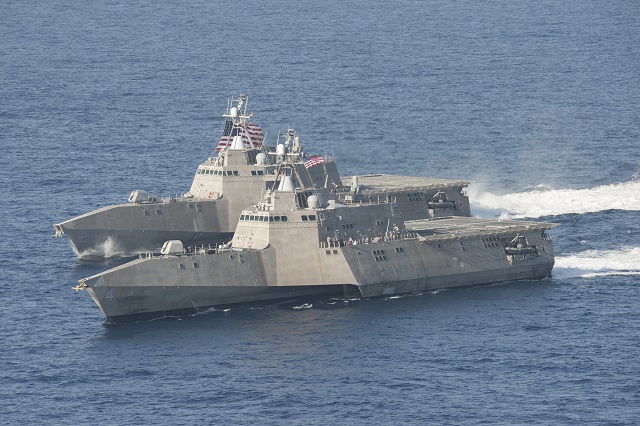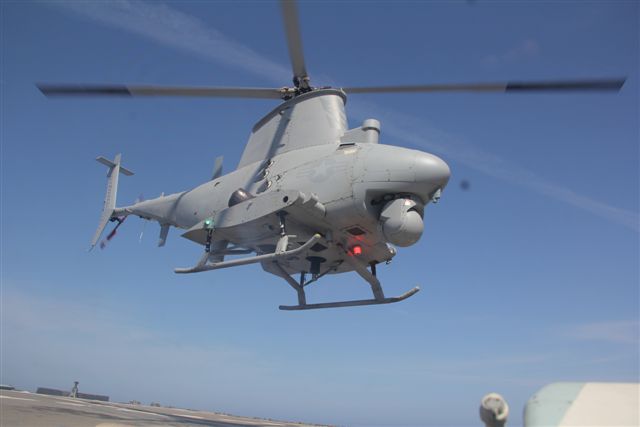 PACIFIC OCEAN (April 23, 2014) The littoral combat ships USS Independence (LCS 2), back, and USS Coronado (LCS 4) are underway in the Pacific Ocean. (U.S. Navy photo by Chief Mass Communication Specialist Keith DeVinney/Released) |
|||
Navy
hardware and Raytheon's software are built with an open architecture,
maximizing flexibility to add new technology as needed. Under a related
effort, the Navy's Common Control System, or NCCS, will be able to control
any air, ground, surface and subsurface vehicles as they deploy with the
fleet. Built on the flexible foundation of Fire Scout MCS, that capability
will reduce Navy-wide implementation costs and training requirements for
unmanned systems. "Our new Fire Scout MCS enables Fire Scout to bring more mission to more areas," said Captain Jeff Dodge, U.S. Navy, Fire Scout program manager. "Fire Scout is a proven capability in dynamic littoral environments, and now provides the potential for multiple platforms to be controlled from a single MCS aboard the ship." USS Coronado is the first Littoral Combat Ship to use this upgraded Fire Scout MCS operationally, after logging 600+ hours of testing. Link to Independence class Littoral Combat Ship technical datasheet |
|||
US Navy Littoral Combat Ship USS Coronado deploys with next-gen UAV controls from Raytheon
- Posted On











